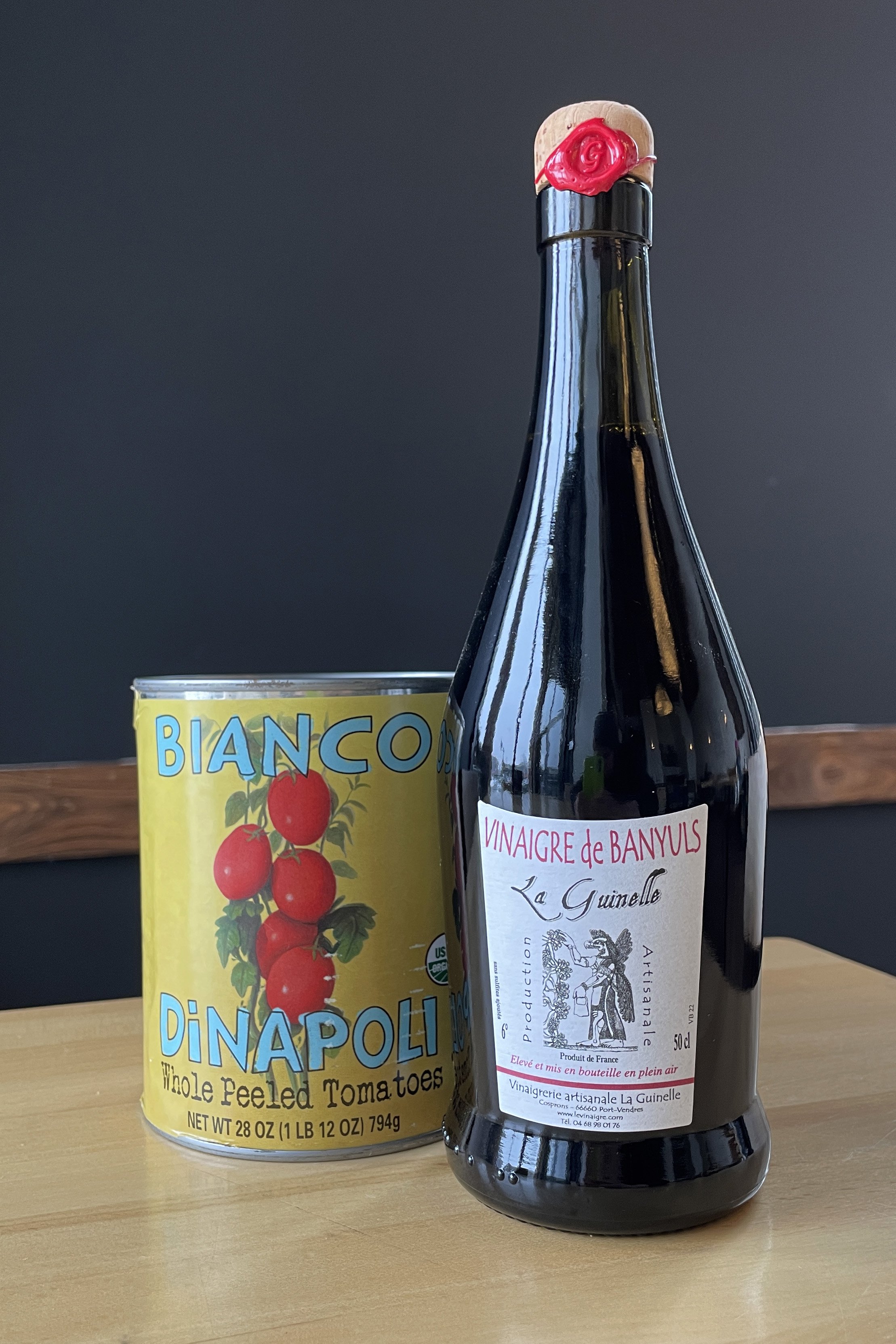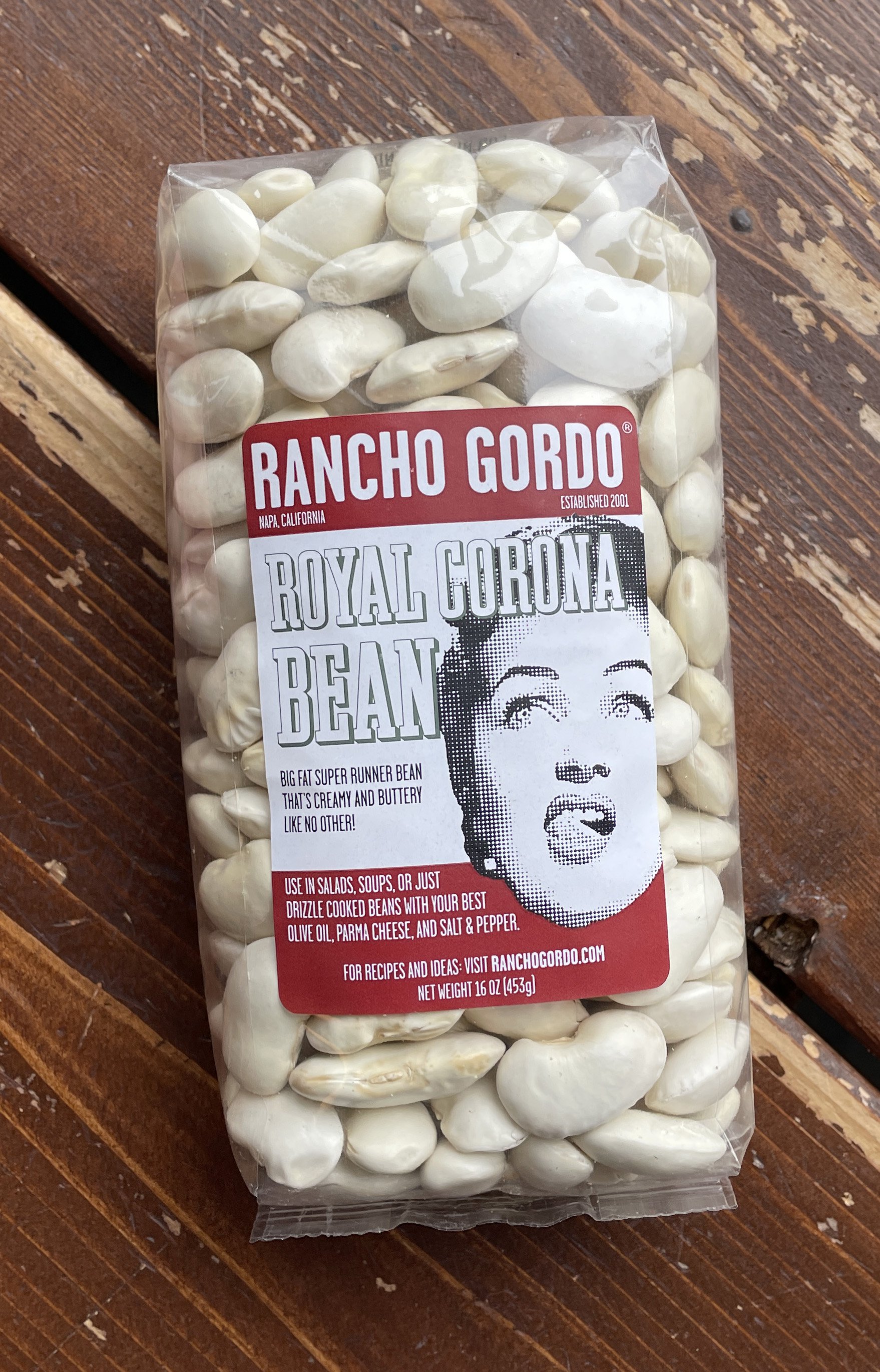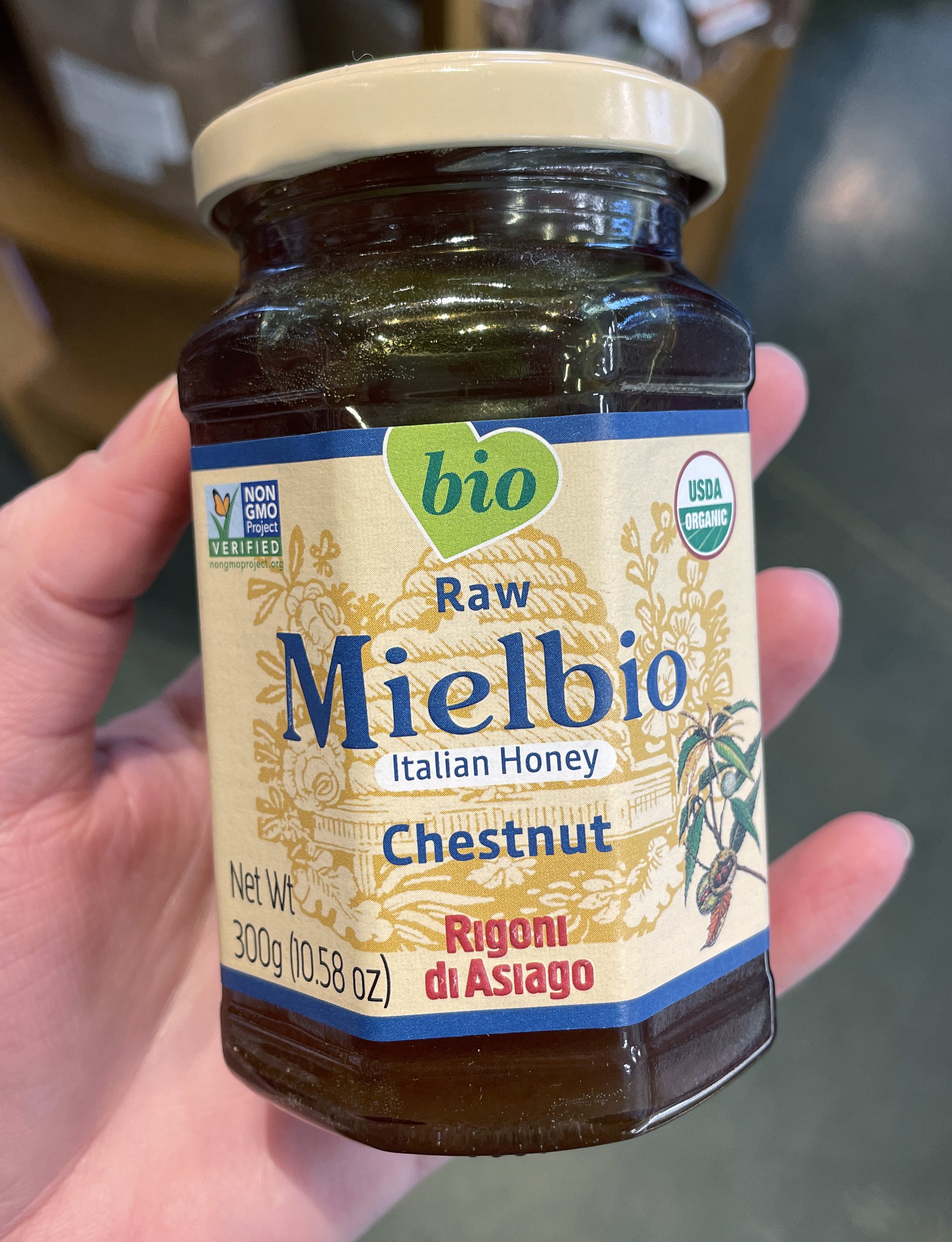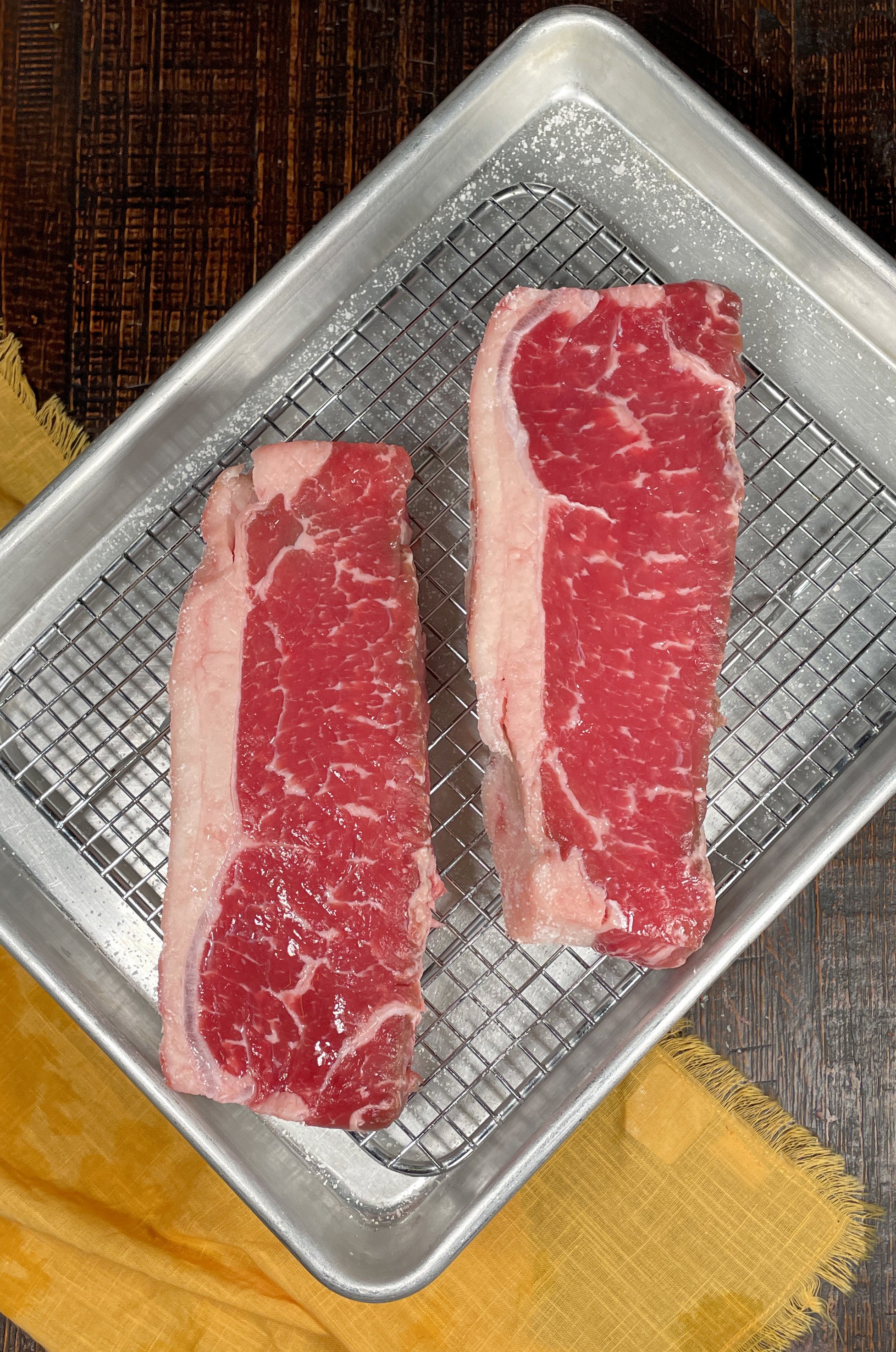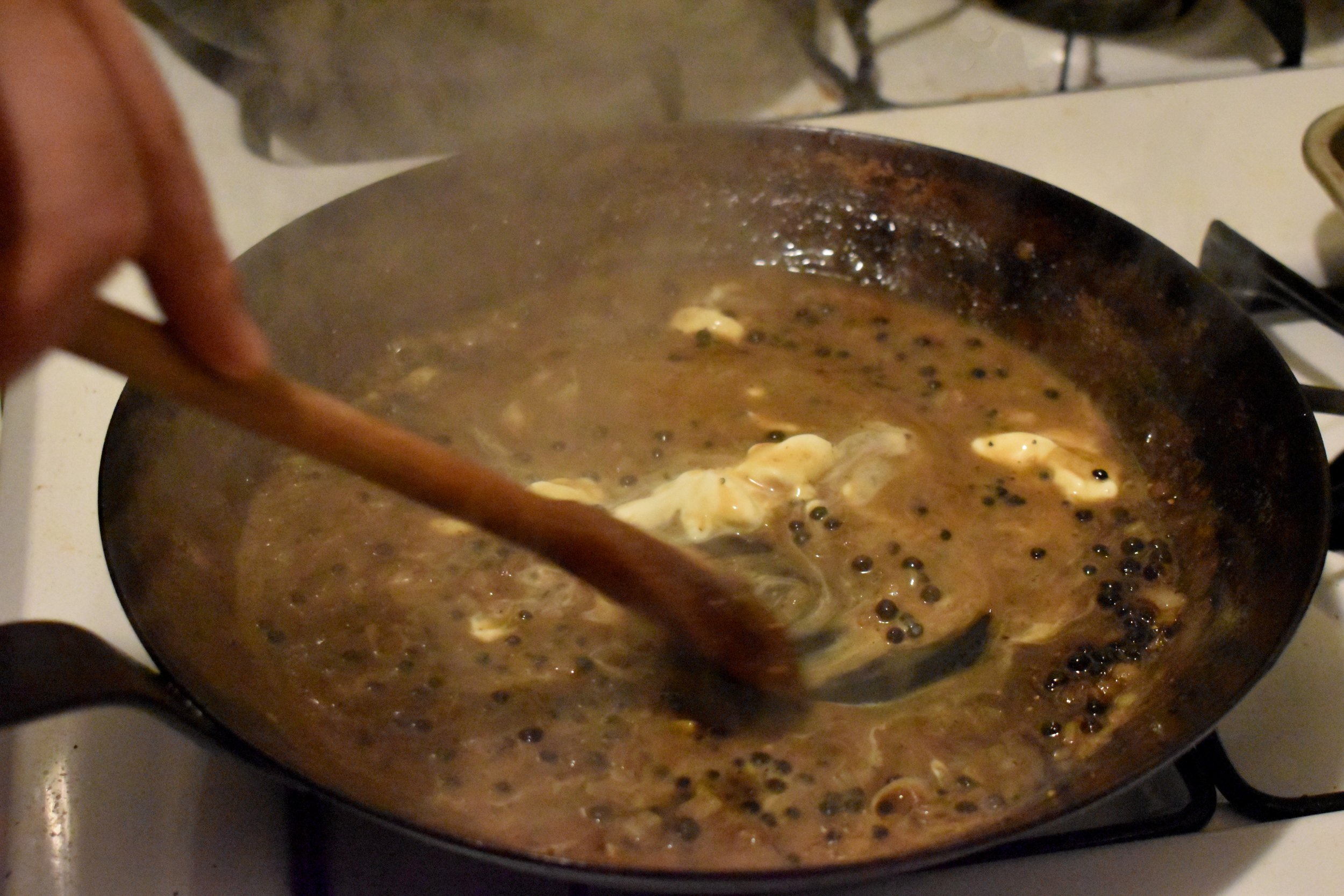by Austin Coe Butler
If you’re ever wondering what to gift the foodie in your life, may I suggest a subscription service of a gustatory nature? I’ve been gifted bean club memberships, artisanal salami subscriptions, and monthly coffee shipments, all to my great delight and surprise. They’re a great way to be exposed to new and different foods you may not have encountered in your well-worn eating habits. Most recently I was gifted a subscription to Sfoglini, a New York-based pasta manufacturer that is best known for inventing a “new” pasta shape, cascateli or waterfalls. A recipe for pasta with a coconut coriander sauce came along with that month’s pasta and I thought I’d give it a try. While the dish turned out beautiful and quite tasty, I couldn’t help but feel like something was missing, and it was only the other night when the spring weather stirred me to make it again that I realized what it needed to shine: the sweet, garlic-y heat of chili crisp oil.
Chili crisps are “having a moment.” For the uninitiated, chili crisp usually refers to hot oil that is poured over chilis with other spices and aromatics to create a silken, fiery red oil that is good on literally everything. It’s the Sriracha of the 2020s. The Chinese Lao Gan Ma brand, with a stern looking woman on the front, exploded in popularity several years ago, and now it seems like everyone and their mother is making artisanal chili crisp. The Pura Macha brand salsa macha we sell in the shop, a Mexican chili crisp with lots of smoky guajillos, chipotles, nuts, coffee, and fruit, is exceptional and can turn something as plain as steamed chicken breast into a transcendent culinary experience.
We recently brought a new chili crisp into the shop, Seattle-based KariKari, a Japanese-style chili crisp. What sets KariKari apart is that it is packed with golden slices of crispy fried shallots and garlic, which most chili crisps tragically skimp on. Many of the staff members, including yours truly, will openly admit to eating half a jar of it in one sitting, whether it’s paired with a cheese like Manchego, a decadent triple creme like Brillat Savarin, or just on plain noodles or a baguette. This chili crisp was what that pasta dish needed, and it totally transformed it, bringing all the flavors into balance with its sweet heat and leaving me craving more. KariKari chili crisp is on promotion this weekend, so stop into the shop to try it for yourself!
This pasta is an easy weeknight meal and can easily be made vegan with the substitution of coconut oil for butter.
Ingredients:
1 ½ tbsp coriander, toasted, and ground
4 tbsp unsalted butter
½ lb. or 8 oz. spinach
1 cup fresh or frozen peas
1 large yellow onion, sliced thinly
6 cloves garlic, minced or grated
1 lb. package of pasta, preferably a shape like rigatoni, busiate, or penne. I use cavatappi here.
1 in. knob ginger, minced or grated
1 14 oz. can unsweetened coconut milk
Cilantro leaves to taste
KariKari chili crisp to taste
Directions:
Bring a large pot of abundantly salted water to a boil while you prepare your mise.
In a Dutch oven over medium-high heat, melt 2 tablespoons of butter. Add the spinach and saute for just a minute or two until it begins to wilt. Then add the peas and heat them through, just another minute or two. Reserve the peas and spinach in a small bowl.
In the same pot, add the remaining butter. Saute the onion until translucent and yielding, about 5 to 7 minutes. You’re not looking to develop any color, just soften the onions.
Add the ground coriander and bloom the spices until fragrant, about a minute.
Add the garlic and ginger and saute for another minute. Your kitchen should now smell amazing.
Finally, add the coconut milk and bring to a boil. Reduce the heat to low, and simmer the sauce while you cook your pasta.
Cook the pasta until 2 to 3 minutes before the time listed for al dente according to the package. My package of cavatappi said 9 minutes, so I removed the pasta at 6 minutes. The pasta will still be raw in the middle, but we’ll finish cooking it in the sauce so the flavors can marry.
Add the pasta to the Dutch oven with the sauce along with a ladle of pasta water. Continue to stir the pasta and test it until it is cooked al dente or to your liking. A nice sauce should have formed in the pot from the addition of the starchy, salty pasta water. If it looks dry, add a half ladle of pasta water at a time. If it looks too watery, allow the sauce to reduce for a minute or two. Check for seasoning one last time, adjusting the salt as necessary.
Serve, garnishing generously with cilantro, and a generous spoonful of two of glowing KariKari Chili Crisp.












